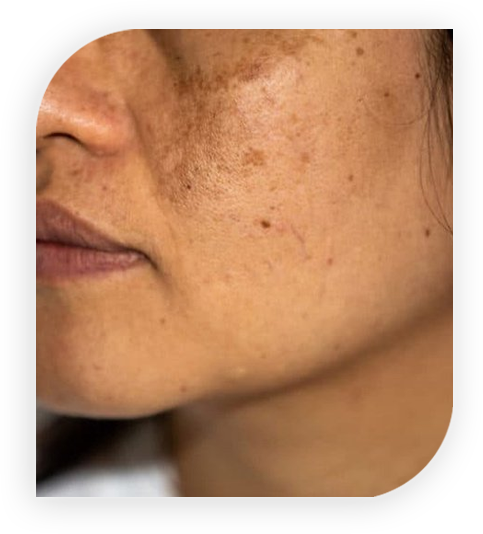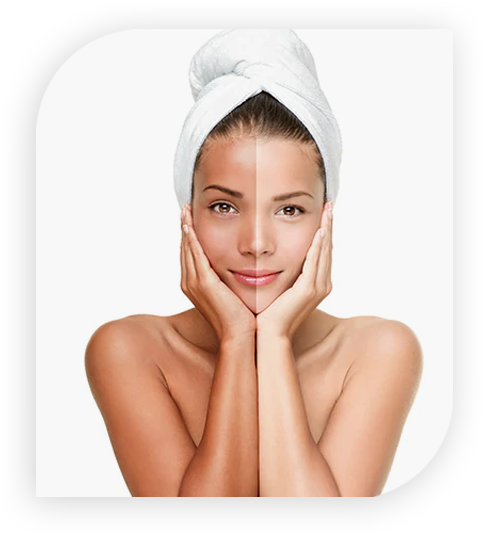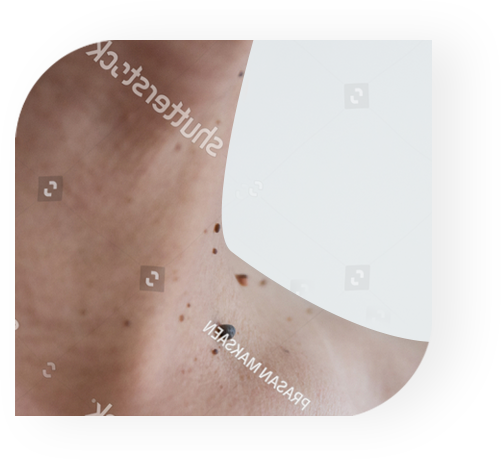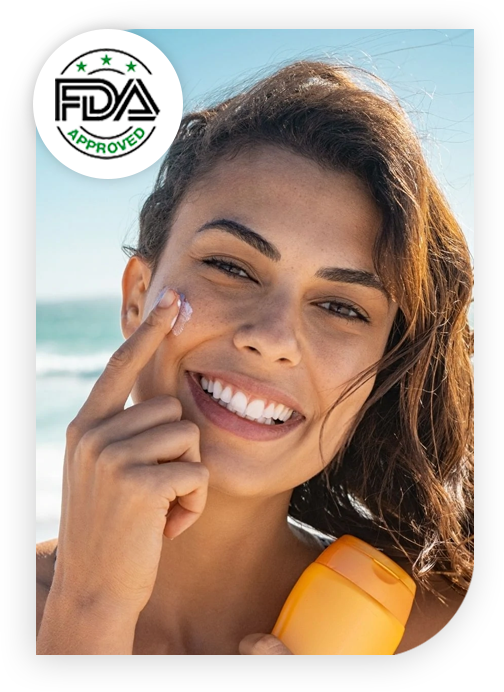Share This Article

The Sun Can Causes Hyperpigmentation

Hyperpigmentation typically appears on areas of skin that are regularly exposed to the sun such as the face, hands, neck and collate. It results in flat, darkened patches of skin that can vary in size and color.
The Sun Can Cause Melasma
The primary trigger for Melasma is hormonal, but the sun can increase the process and make the condition worse. Melasma appears as larger patches of hyperpigmentation mainly on the cheeks, forehead and above the lips. It is particularly common among women, and occurs in 10-15 percent of pregnant women and in 10-25 percent of women taking oral contraceptives.
Using daily sun protection should be at the top of your skincare agenda because sun damage is one of the many causes of both skin premature aging and various skin and health problems.

White & Dark Skin

The likeliness of sunburn is well-known for white skin people but less known for dark skin. In a 2018 study, published in the journal of JAMA Dermatology, researchers surveyed 31,162 people about their sun protection habits. They found that 30 percent of Hispanics and 13 percent of Black people had experienced sunburn in the past year. Redness, the telltale sign of sunburn for white people, might not be as evident on darker skin, but skin can still feel hot, tight, and painful.
Any acquired tan, either in white or brown skin, is a sign that the skin is being damaged by the sun. And even if you don’t burn, unprotected time in the sun can still result in damage.
Important to Protect Your Skin From The Sun Every Day.
You can use all the best anti-aging ingredients in the world but if you don't put on sunscreen it's all for nothing. The Sun is Responsible For Up to 90% of Premature Skin Aging.
Harmful UVA rays are present from the moment the sun comes up to the moment the sun goes down.
Harmful UVA rays are present from the moment the sun comes up to the moment the sun goes down.

Harmful Even on Cloudy Days

Even when it’s cloudy, up to 80% of the sun’s harmful UVA rays are present from the moment the sun comes up to the moment the sun goes down. Even when it's cloudy, up to 80 percent of the sun's UV radiation reaches the earth.
Harmful Even When Driving

It doesn't matter if you're driving because UVA rays can get through the car windows. You're not even safe indoors if your office/workplace/house has plenty of windows and you're spending way too much time in front of them.

Harmful Even When Indoors

You're not even safe indoors if your office/workplace/house has plenty of windows and you're spending way too much time in front of them.
Harmful in Just 10-Minutes
Walking to the subway, exiting and entering different stores at an outdoor mall can cause sun and skin damage over time. It can cause accelerated skin aging, wrinkles, age spots, loose skin, spider veins, a blotchy complexion and skin cancer.
Recently Disclosed
Sunscreen Dangers
Health Dangers of Sunscreen You May Be Using
The FDA warned, in January 2020, that 14 of 16 ingredients found in chemical Sunscreens are potentially harmful. They stated they can disrupt hormones, add to infertility problems, birth defects and risks of breast and other cancers.

Skin Dangers of Sunscreen You May Be using

Many sunscreens rather than protecting against sun damage, contain ingredients that encourage free radical damage when exposed to sunrays. Free radicals and UV exposure are the primary causes of wrinkles and fine lines. According to the U.S. Centers for Disease Control and Prevention (CDC), U.S. Department of Health and Human Services, the Environmental Protection Agency (EPA), the World Health Organization (WHO), and other regulatory agencies, a common ingredient contained in many sunscreens is known to cause blood cancer in humans, decrease red blood cell production, and suppress the immune system.
One of these toxic sunscreen ingredients is Benzene which is a known carcinogen. Early signs of benzene exposure can include headaches, tremors, dizziness, vomiting, convulsions, and even death.
Harmful After One Application
The FDA found that after just one application the ingredients in sunscreen can soak through the skin into the blood stream and can remain in the body for an extended period of time. This is particularly dangerous because many people wear sunscreen every day and leave it on their skin throughout the day. A study done by the FDA showed that within 3 days ingredients contained in sunscreen appeared in urine samples and breast milk.

A Few Of Man Chemical Sunscreen Dangers

Some of the most worrisome ingredients in chemical sunscreens include oxybenzone, a known endocrine disruptors, and retinyl palmitate, a form of vitamin A that may harm skin and possibly lead to skin tumors. These two ingredients and other harmful ingredients in sunscreen such as octinoxate, octisalate, octocrylene, homosalate and avobenzone are all systemically absorbed into the body. Sunscreen users can also inhale ingredients in sunscreen sprays so it’s important to not use sunscreens with ingredients that can be harmful to the lungs or internal organs.
On July 14, 2021, after a class action lawsuit was filed in the Southern District of Florida, Johnson & Johnson announced the recall of five different sunscreen products under Neutrogena and Aveeno brands. According to the company, these products are contaminated with benzene - a dangerous carcinogen that has been linked to leukemia and other cancers.
FDA Concluded Only Mineral Sunscreens are Safe
FDA concluded in their recent studies that only mineral sunscreens are safe because they are not absorbed into your blood. A reason people have traditionally chosen choose chemical sunscreens, instead of mineral sunscreens, is that most mineral sunscreens sit on top of the skin and show a thick white layer – almost like a mask.








Leave a Reply